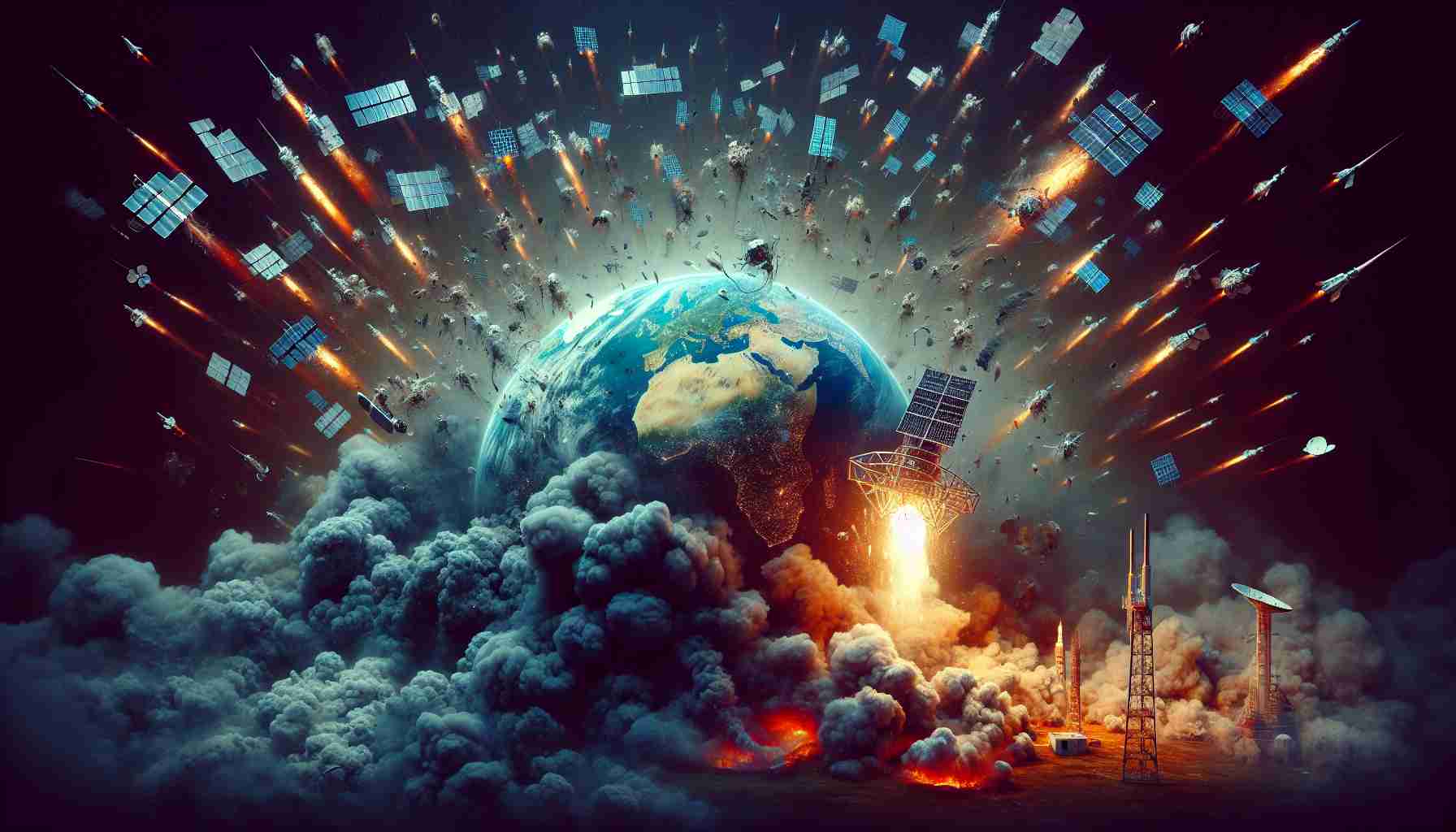
A coalition of 120 scientists and space professionals is advocating for a halt on future Starlink satellite launches by SpaceX. They emphasize the need for an in-depth examination of the environmental implications associated with extensive satellite networks. In an official communication to the Federal Communications Commission (FCC), these experts expressed alarm regarding the proliferation of mega constellations, where various companies are racing to develop communication satellites in low Earth orbit.
Currently, SpaceX operates approximately 6,000 Starlink satellites, making up a significant portion of active spacecraft in orbit. The company plans to increase this number to about 30,000 as part of efforts to boost internet service quality. However, concerns have been raised about the lifecycle of these satellites, particularly how they will be disposed of after their operational period. A preliminary investigation suggests that the large-scale launch and disposal processes could have detrimental effects on the ozone layer.
The group’s letter highlighted that increasing the number of satellites will contribute to environmental pollution in terms of harmful gases and metals. They have urged regulators to reconsider the necessity of multiple satellite constellations occupying the same orbital space, pointing to an alarming lack of environmental reviews for current satellite applications.
In response, SpaceX has claimed that it is committed to minimizing environmental impacts and has collaborated with the astronomical community for better practices. However, the FCC has yet to respond formally to these pressing concerns.
Concerns Grow Over Satellite Launches and Environmental Impact
As the industry moves forward with increasing satellite launches, the environmental implications have emerged as a serious concern. With the rise of mega constellations such as SpaceX’s Starlink, questions regarding the sustainability of these operations have become more pronounced.
What are the main environmental concerns associated with satellite launches?
The significant environmental impacts tied to satellite launches and operations include light pollution, space debris, potential ozone layer depletion from rocket emissions, and chemical waste associated with the manufacturing and disposal of satellites. The production and launch of satellites generally require substantial energy resources and emit greenhouse gases.
What are the key challenges associated with satellite proliferation?
1. Space Debris: The exponential increase in satellites has raised concerns about the accumulation of space debris. This poses risks to operational satellites and the International Space Station, increasing the chances of catastrophic collisions.
2. Light Pollution: The reflective surfaces of satellites can interfere with astronomical observations. This has ignited debates within the scientific community over the integrity of celestial research.
3. Regulatory Framework: There is a notable gap in governance regarding how to manage the increasing number of satellites. Current regulations have not kept pace with technological advancements, leaving a void in accountability for environmental impacts.
What advantages do satellite networks provide?
– Global Connectivity: Satellite networks like Starlink are capable of providing internet access in remote and underserved areas, potentially bridging the digital divide.
– Disaster Relief: Satellites can play a crucial role in disaster response initiatives by providing real-time data and connectivity.
– Economic Growth: The satellite industry contributes to economic growth and innovation in technology.
What are the disadvantages?
– Environmental Toll: As noted, the launch and operation of thousands of satellites have far-reaching ecological impacts.
– Noise Pollution: The rocket launches themselves contribute to noise pollution and, when occurring frequently, can disturb local wildlife and communities.
– Technological Reliance: Increased dependency on satellites may compromise local internet infrastructure improvements and lead to vulnerabilities if satellite systems fail.
What is the future of satellite launches and environmental considerations?
To coexist with the emerging constellation of satellites, it is crucial for regulatory bodies like the FCC to implement stricter environmental assessments. Continuous dialogue between space companies, scientists, and environmentalists is necessary to create sustainable practices.
In the face of innovation, questions remain. How will Earth’s orbital atmosphere cope with the increasing saturation of satellites? Can technological advancements mitigate their environmental impact effectively? Only time will tell as both the industry and regulatory bodies seek to reconcile growth with ecological responsibility.
For more information on the environmental implications of satellite launches, visit NASA and SpaceX.



